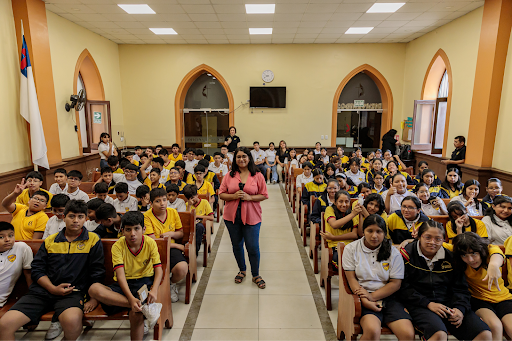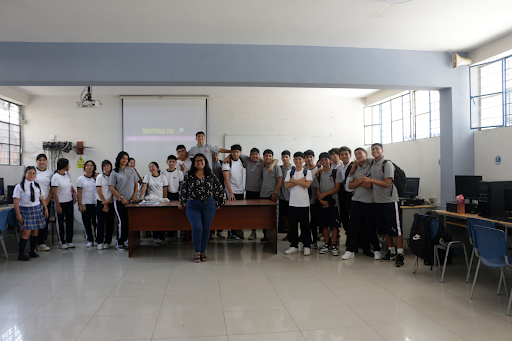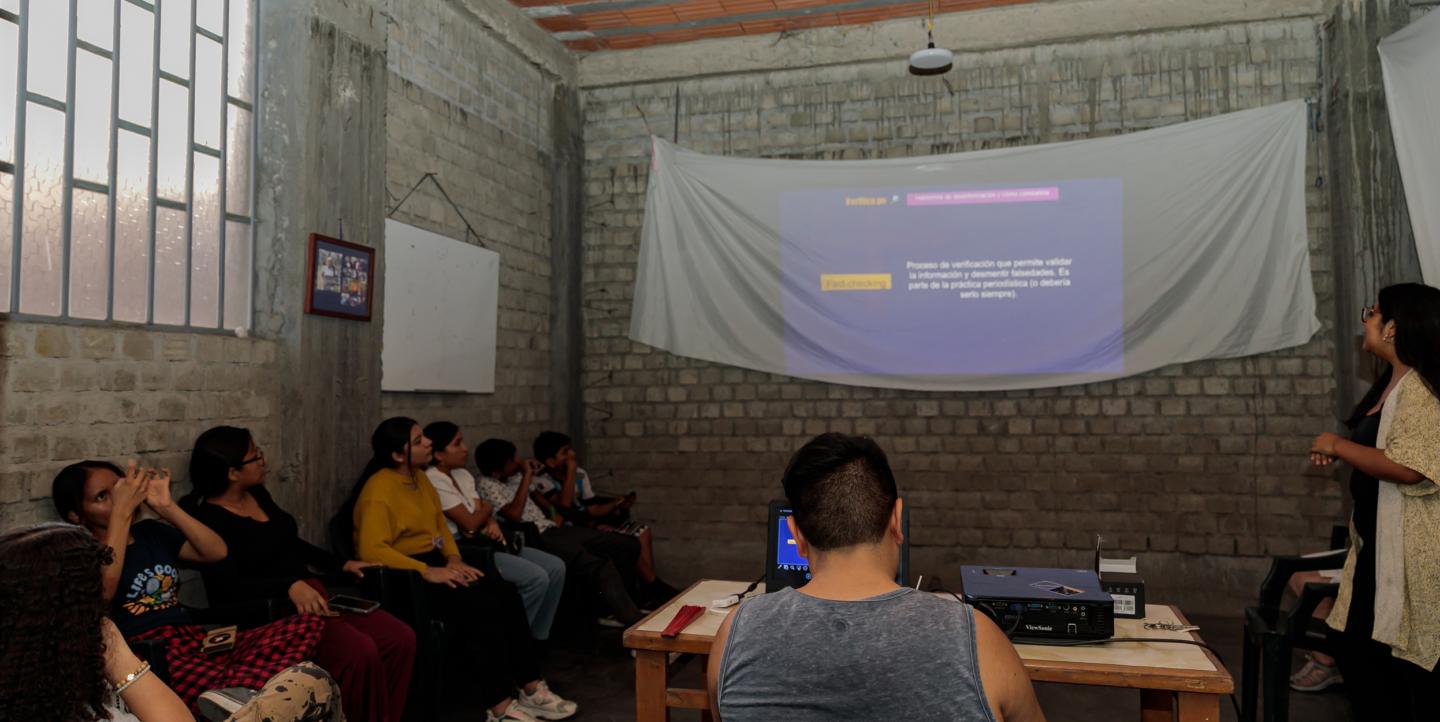The International Center for Journalists’ (ICFJ) Disarming Disinformation initiative is a three-year programme, supported by the Scripps Howard Foundation, that aims to slow the spread of disinformation through multiple programmes such as investigative journalism, capacity building and media literacy education. ICFJ partnered with MediaWise from the Poynter Institute to develop and deliver media literacy programming.
The media literacy training of trainers programe accepted global participants for two different cohorts. The participants are community leaders who will educate others on the importance of media literacy and how to apply those skills in real life. The article below is one of five impact stories selected from the second cohort. The programme thus far has trained 27 trainers who have reached more than 3,200 people.
When the COVID-19 pandemic hit Peru, Lucero Ascarza found herself staring down a new challenge in the classroom: disinformation.
She had started her career as a reporter for Convoca, a Peruvian-based investigative journalism organisation, digging into the Panama Papers as part of an international coalition of journalists. Later, Ascarza transitioned into education at the Pontifical Catholic University of Peru, where she helped the next generation of reporters learn the craft. But it wasn’t until the public health crisis — and the mistrust that fueled Peru’s anti-vaccine movement — that she realised how central the fight against falsehoods had become.
That realisation shaped the next part of her career. At Salud con lupa, a newsroom focused on public health, she saw firsthand how dangerous misinformation could be. Training with Chequeado and MediaWise introduced her to the concept of media literacy as a tool for teachers and entire communities. Through the International Center for Journalists’ Disarming Disinformation initiative, she turned that idea into action, reaching more than 150 people — from students to community leaders — with skills to spot and stop falsehoods before they spread.
Honing media literacy skills
With her foundation in journalism and fact-checking, Ascarza knew teaching media literacy would require an approach that ensured the concepts were relevant and relatable to the community. Teaching media literacy is not just about debunking or prebunking false information. It is also about having and applying the skills to think about and evaluate one’s information ecosystem critically. Ascarza found that leaning on ice-breaker exercises, frameworks (adapted for each audience) and innovative activities made the concept of media literacy more accessible and digestible for the communities she taught, which included educators, students and a church.
By employing interactive activities and using real-world examples, workshop attendees found media literacy to be a necessity in their lives.

Engaging with communities
Ascarza knew she wanted to reach teachers and teenagers. She was confident she could do that in school settings, but she would need to rely on other methods to reach teens not in traditional school settings. As Ascarza thought about the challenge, she quickly realised that church communities could be an outlet to reach teenagers. She reached out to a pastor of a Lutheran church in eastern Lima and the duo quickly realised they were after the same goal —- equipping teens with the skills to navigate harmful, false information.
This led to a cross-denominational approach: They reached out to a local Methodist church, which also openly welcomed Ascarza’s media literacy workshops. Ascarza quickly found herself running media literacy workshops for more than 100 secondary school students at once.
Workshops
Ascarza named her workshops "Verifica pe: Hablemos de desinformación y cómo combatirla," which loosely translates to “Verify: Let’s talk about disinformation and how to fight it.” (In Spanish, specifically the Peruvian dialect, using “pe” after a verb is a colloquial, funny way of emphasizing the action.)
Ascarza knew she had to break the ice with her audiences, but doing so while maintaining their trust was key. She opened with a question about what they engage with on social media and why, followed by a short social video. Then she used an exercise to know her audience before shifting the conversation to asking about particular media literacy concepts such as disinformation, clickbait and deepfakes.
“It's important to choose examples that are relatable to the specific audience,” said Ascarza
Once she broke the ice, Ascarza transitioned to the media literacy framework she constructed, which consists of three steps: Stop, Distrust, and Verify. She walked her students through it by using examples from local news outlets and videos created by gaming influencers on social media that were offering money to people who registered for different websites.

Impact
Following Ascarza’s workshops, she found a positive increase in both educators' and teenagers’ abilities to question and discern information they consumed. For example, educators acknowledged that a social media post does not necessarily accurately represent “news,” and that if government-related information does not appear on an official government page, it may be a scam.
Attendees’ biggest learning outcome was that it is important to think about the intentions behind posts. Teachers also shared that they will take the media literacy skills that Ascarza shared and teach them to their students. Ultimately, that means recognising not to take social media posts seriously and sharing them without verifying their accuracy — and always using the framework Ascarza shared with them: Stop, Distrust, Verify.
“I found it interesting, something we do not give importance to but it is necessary to know it and put it into practice,” said a student, Jessica C.
“I learned how to find out if we are being informed about real or adulterated news and events in order to be forewarned and not fall into scams, ” said one teacher, Edith C.
Looking ahead
Following her workshops, Ascarza was asked to become an adviser for the high school’s journalism club — expanding activities both in journalism and media literacy. Ascarza will also promote responsible use of AI with educators and students as the world grapples with AI technology and how to employ AI literacy in their respective settings.
Keep an eye out for Ascarza’s latest initiative: a new media venture called Contranoticia, created with former colleagues. It aims to focus on community-centred stories with a human rights and gender-centred approach. Within this new media venture, Ascarza plans to implement fact-checking under the same name as her media literacy workshops, Verifica pe, to continue the role of amplifying facts over fiction and equipping individuals with skills to discern credible information on their own.
Main image courtesy of Sebastián Blanco.
Renata Salvini contributed to this article.


